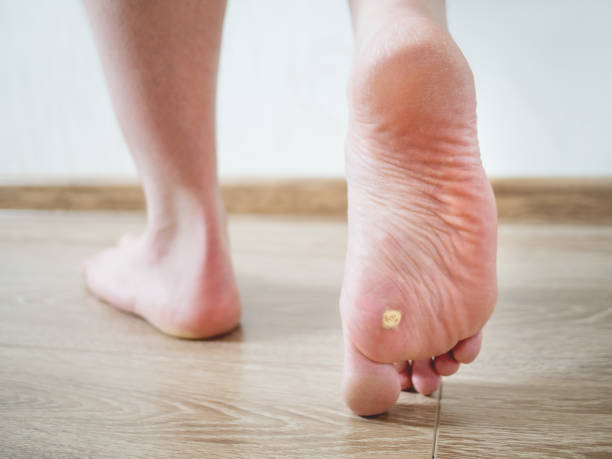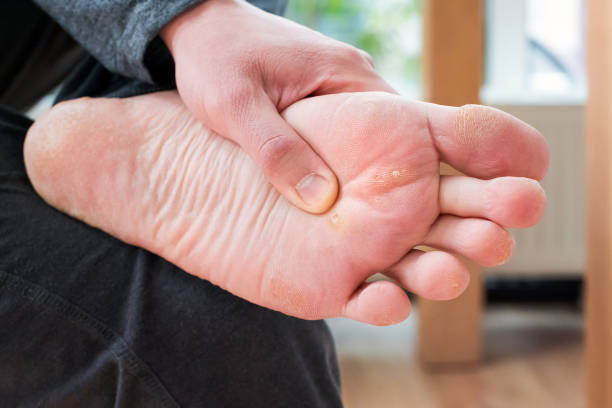Nearly two-thirds of warts disappear on their own over 12-24 months. That’s because most people’s immune systems eventually fight them off.
If your warts hurt, bleed or change shape or color, talk to your healthcare provider. They can often diagnose them by looking at your skin, including a shave biopsy.

Causes
Most warts are caused by viruses, especially HPV. Those viruses are contagious, and they can spread to other parts of your body — especially your face and genital area. It is more common to get HPV on these areas, and it can be easier to spread the virus there, too.
Almost everyone gets warts at some time in their lives. They can be painful and unsightly, but they are usually harmless. In most cases, your immune system will fight them off. It may take months or even years for your body to break them down, though. And some warts never go away, no matter what you do.
The most common treatment for warts is called cryotherapy. It involves a doctor freezing the wart using liquid nitrogen. This treatment can cause dark spots in people with dark skin, and it often needs to be repeated. Electrosurgery, curettage (scraping off the wart with a tool) and excision are other surgical options for removing warts.
Non-prescription salicylic acid products, including gels and plasters, can help remove some warts. They are available in most pharmacies. But more research is needed on these products, because they haven’t been well tested.
Symptoms
A wart looks like a small bump or raised skin lesion. It may be black in color and have a cauliflower-like appearance. They can grow anywhere on the body, but are more common around the fingers and near nails, and especially in areas with broken skin. Some people have a stronger immune system and don’t develop warts, while others get them more easily, such as children and those with diabetes or weakened immunity due to HIV infection.
It can be hard to diagnose warts by looking at them, but they often disappear on their own over time. Your podiatrist will usually examine the area and ask about family history before deciding on treatment. If there’s a lot of bleeding when the wart is touched or the area hurts, it’s important to see a podiatrist in Albany, WA right away.
The health care provider will probably order a blood test to check for HPV or other viruses that can cause warts. They may also remove a small piece of the wart (biopsy) to study it under a microscope.
Most warts can be treated at home by rubbing them with salicylic acid solution. This can be purchased without a prescription at most pharmacies. The medication is applied to the wart several times a day over the course of weeks to gradually dissolve it.

Diagnosis
The HPV virus that causes warts varies, and different strains trigger different types of warts in different parts of the body. People with weakened immune systems have a higher risk of developing certain kinds of warts, including genital warts that can be transmitted through intercourse.
Over-the-counter medicines in liquid, gel and pad form may help to treat warts at home. These contain salicylic acid, which softens abnormal skin cells. Liquid nitrogen products also are available to kill a wart by freezing it. It may take a few weeks or months for home remedies to work, and even then the warts often recur.
Doctors can treat warts with wart removal Albany or minor surgery. Some doctors use a special acid called trichloroacetic acid to remove warts. This treatment requires a special tool, such as a wooden toothpick, to apply the acid directly to the warts. It can be painful and stinging. Doctors also can use pulsed dye laser treatment to burn (cauterize) tiny blood vessels in the warts. This is effective, but it leaves scars in the treated area.
There are no ways to prevent common warts, but you can reduce your risk for them by not touching or picking at your warts. You can also try not to share towels, washcloths and shoes, and avoid walking barefoot in places like public swimming pools and locker rooms.
Treatment
Warts can be unsightly, but they’re usually harmless. Most clear up on their own. Some are more stubborn, especially those on the soles of your feet.
There are over-the-counter wart treatments that can help get rid of some types of skin warts. Those include salicylic acid solutions that you put on the warts several times a day over a few weeks to gradually dissolve them. They’re available without a prescription at pharmacies. You should avoid using them on your face or genitals, because the same type of virus that causes skin warts can also cause HPV-related cancers in those areas.
Doctors have several other ways to treat warts. They may try shaving away the warts with a blade or burning them with electricity (cryotherapy). This can hurt and leave scars, but it’s usually the most effective treatment. Doctors can also inject you with medicines that stop the warts from spreading, such as bleomycin for common warts or interferon for genital warts.
Surgery is used only if the warts won’t go away with other treatment. This can involve cutting them off or burning them with electricity. Your doctor will give you a shot of anesthetic first to prevent pain. You should not have this treatment if you have diabetes or nerve damage in your feet, such as from Raynaud’s disease.





